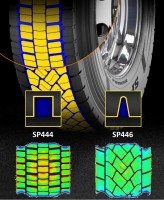Aluminium content in cars to increase up to 30%
The aluminium content in cars is set to increase by up to 30 per cent over the next 10 years. Auto Body Sheet leads the growth with an expected increase of 110 per cent over the same period. The growth is largely attributed to aluminium’s role in reducing car weight thereby contributing to low emission mobility.
The study, by consulting and research firm Ducker Worldwide and commissioned by European Aluminium, predicts that the aluminium content of cars produced in Europe could reach nearly 200 kg per vehicle by 2025, up from 150 kg today.
“We expect the aluminium content in cars to continue its growth trajectory by as much as 30 per cent in the next 10 years,” stated Wouter Vogelaar from Ducker Worldwide. “Although we find total content growth in all forming processes, rolled and extruded products have been particularly identified as replacing steel in many instances for products used in body closures and body structures. For example, we expect the use of Auto Body Sheet to double over the next decade.”
According to the report, well-engineered aluminium car parts can be both safer than steel and up to 50 per cent lighter. Lighter cars substantially contribute to reducing CO2 emissions and improving fuel efficiency. In fact, using 200 kg of aluminium in a car could reduce CO2 emissions by up to 16 grams per kilometre travelled. With the 2014 average at 123g/km, increasing the aluminium content in cars could play a significant role in enabling the EU to achieve its target of 95g/km by 2021.




Comments